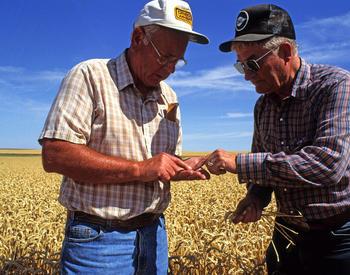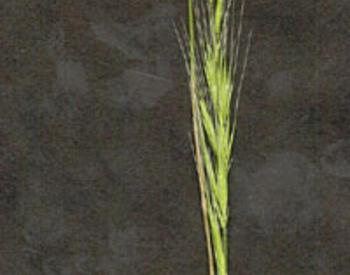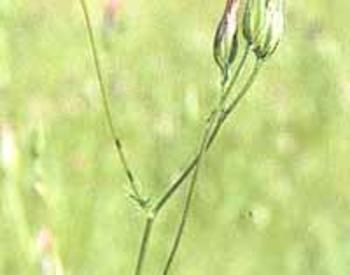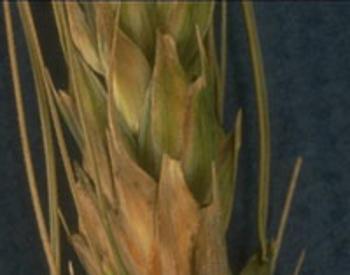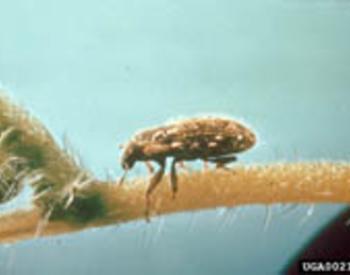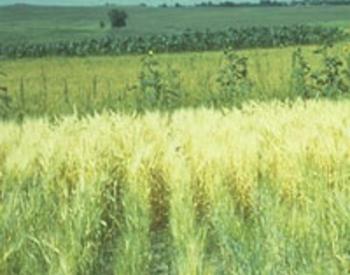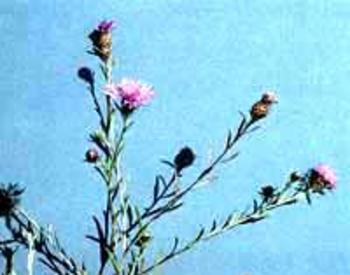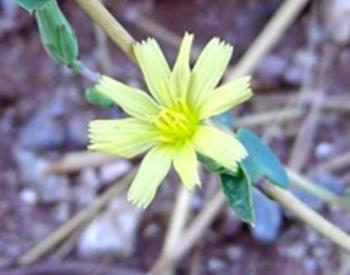The first Hessian flies in America appeared on Long Island near the camp of Hessian troops after the Revolutionary War. In Umatilla County, literature references local Hessian fly problems back in 1980. A survey of 64 fields in 1981 found Hessian flies scattered throughout the county. The Hessian fly's life cycle is highly weather dependent. Rainfall patterns in our dryland cropping areas are likely the cause of this year’s outbreak coupled with increased plantings of spring wheat. An outbreak in 1993 was attributed to a wet spring and delayed planting.
Hosts
Wheat, barley, and rye. Spring wheat is by far the favorite.
Fall Infestation
Injured leaves turn dark bluish green, display a thickened appearance, and stand more erect than those of uninfested plants. Small white maggots about 3/16 inch can be found behind the sheaths of the lower leaves of the plant, usually below the surface of the ground. Heavily infested plants may die during the winter.
Spring Infestation
Stems infested may die or break shortly before harvest. Late spring, the maggots of "flaxseeds"' (puparia) can be found beneath the leaf sheath above the surface of the ground, sometimes as high as the second or third joint.
Practices contributing to the buildup of the Hessian fly include minimum or no-till farming, as wheat stubble is a primary site where the fly both over winters and over summers. There are several management options to address this issue.
Fall plantings
- Plant after October 15 to avoid hessian fly.
- Grow other less susceptible winter cereals - winter barley or triticale where practical.
- Control "Green Bridge" of volunteer and host weeds. -Consider insecticide at planting if other management options are not practical or the threat of a Hessian fly infestation is high.
Resistant cultivars in spring plantings
- Zak, a recent wheat release with Hessian fly resistance, is a soft white spring wheat released by WSU in 2000. With its yield potential and Hessian fly resistance, it is seen as a replacement for Penawawa, Alpowa and Wawawai.
Chemical Control
| Insecticide | Rate | Notes |
|---|---|---|
| Gaucho 480 | 1 to 3 fl oz/100 lb seed | Wheat and barley only. |
| Di-Syston 15G | 1 lb | Fall Wheat, barley. Drill or broadcast at planting time. One application only. Do not graze or cut for forage with 75 days. |
| Di-Syston EC | 0.5 to 1 lb | Fall wheat only. Use as soil injection at planting time with water or liquid fertilizer. Do not graze. |
| Phorate | 1 lb | Do not feed or graze within 45 days of treatment. Apply granules in seed furrow at planting time. |
| Thimet | 20G 0.24 oz active ingredient/1,000 row ft | See restrictions for phorate. |
Treatments are not listed in any order of preference. Always read and follow the label.
Additional Resources
